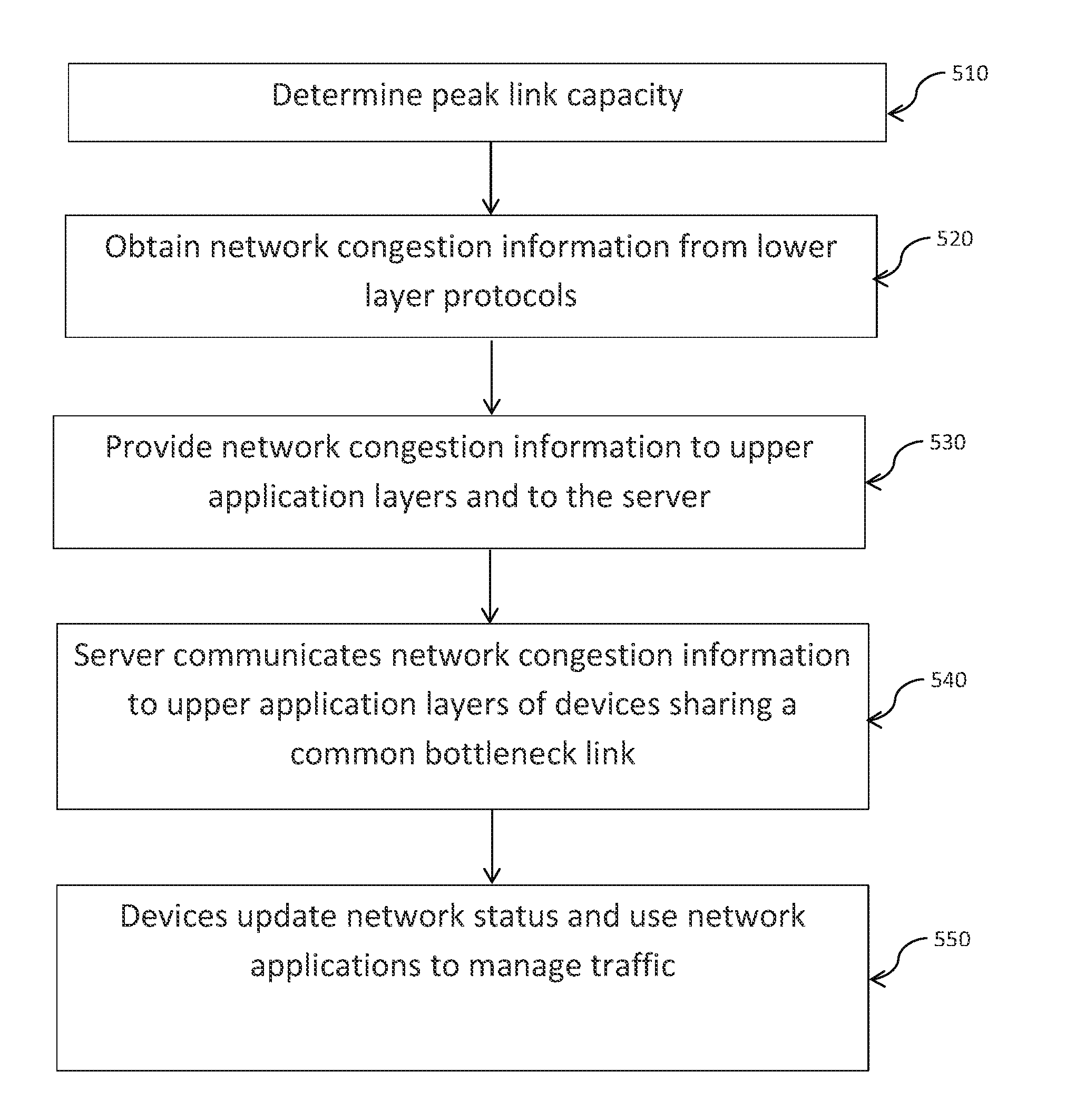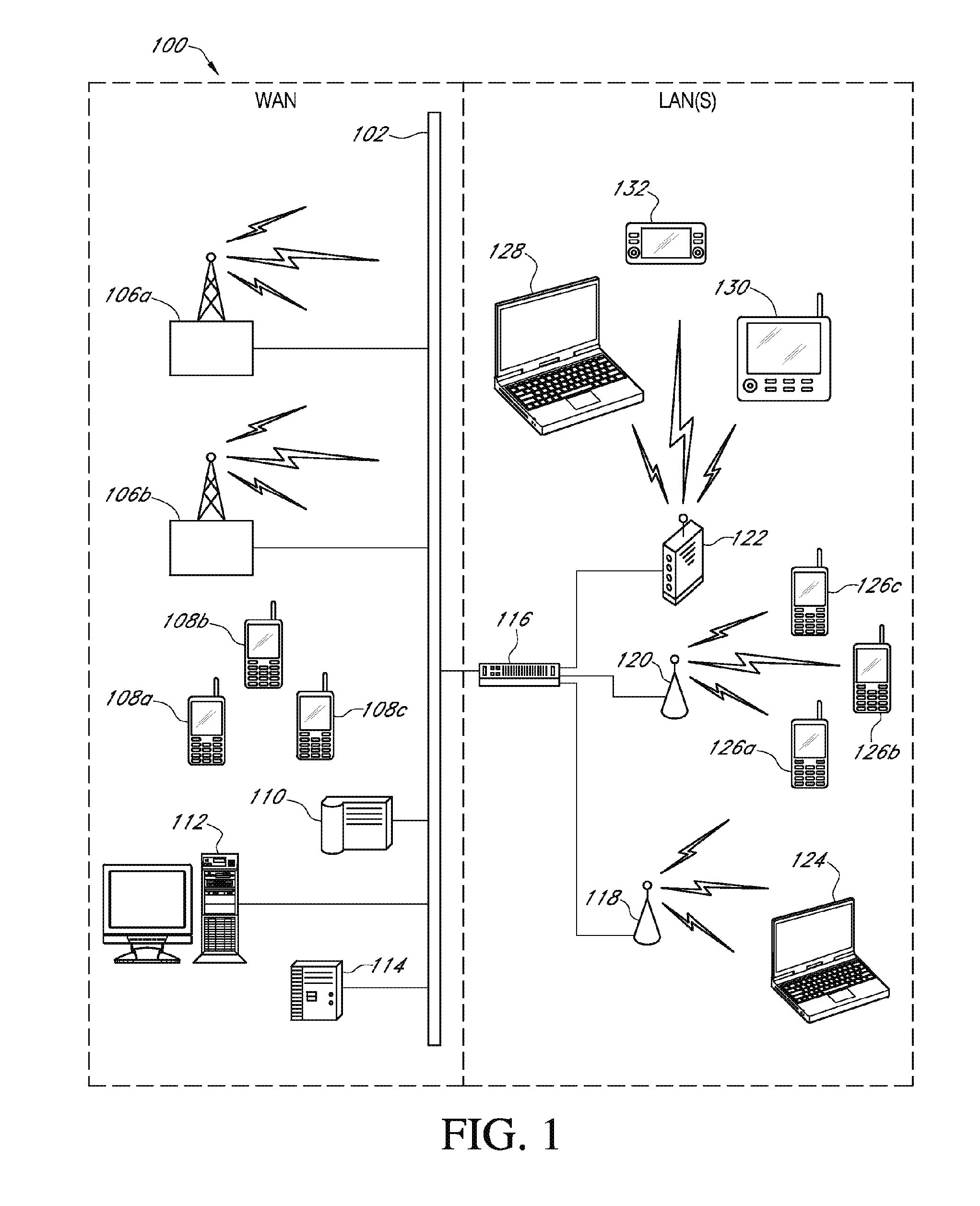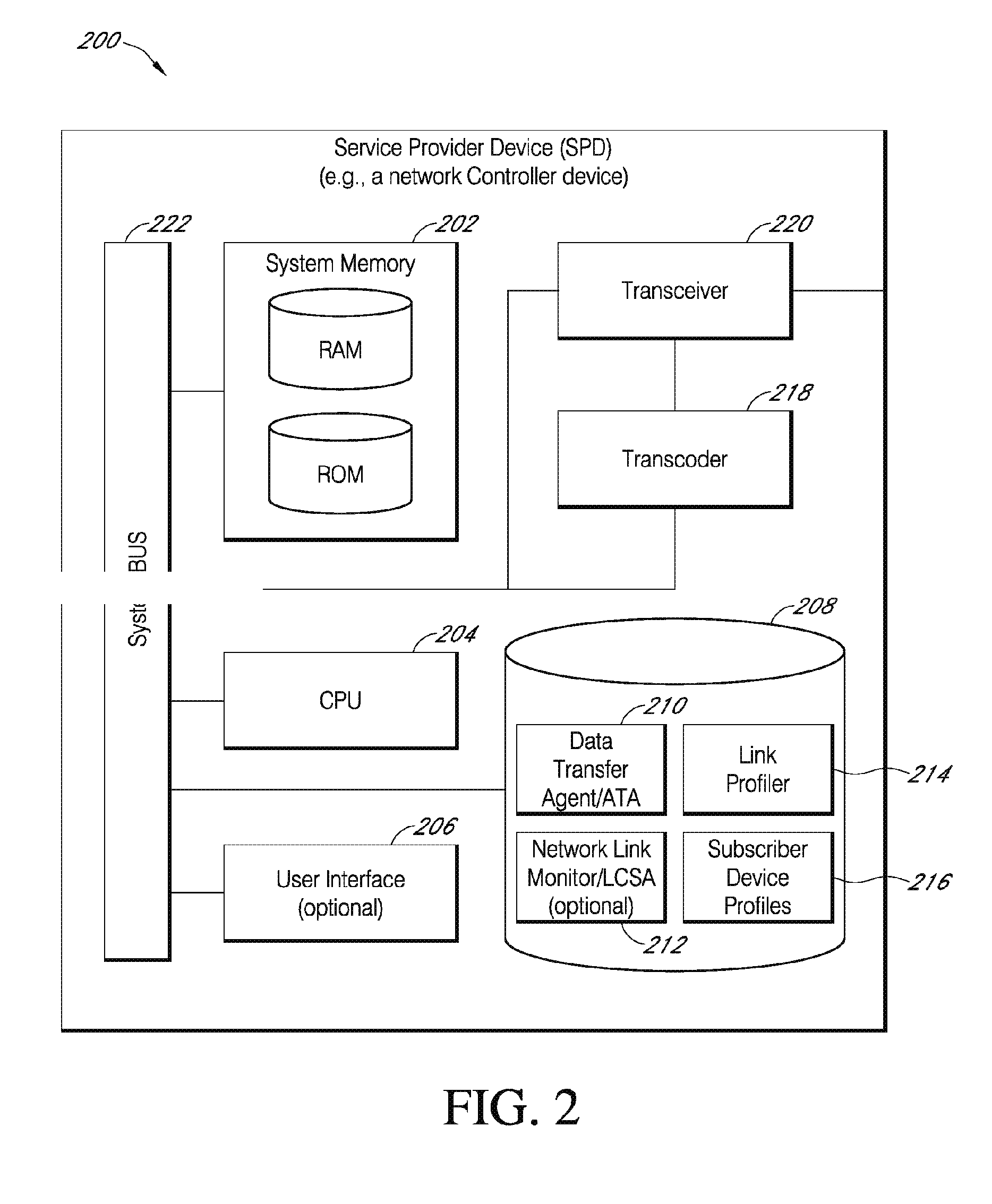Method and system for cooperative congestion detection in cellular networks
- Summary
- Abstract
- Description
- Claims
- Application Information
AI Technical Summary
Benefits of technology
Problems solved by technology
Method used
Image
Examples
Embodiment Construction
[0029]FIG. 1 illustrates a networked computing system 100 including various wireline and wireless computing devices that may be utilized to implement any of the network traffic and radio communications quality monitoring or data content transfer optimization processes associated with various embodiments of the present invention. The specific network configuration shown in FIG. 1 is intended to provide an example of a high-level computing system capable of facilitating various network communications processes of embodiments disclosed herein. Network configuration and topology changes could be made to the networked computing system 100 of FIG. 1, without departing from the spirit and scope of the present disclosure.
[0030]In an embodiment, the networked computing system 100 includes a group of service provider devices; a data communications network 102; a variety of remote user equipment; one or more devices to facilitate data communications; and one or more local user equipment. In ad...
PUM
 Login to View More
Login to View More Abstract
Description
Claims
Application Information
 Login to View More
Login to View More - R&D
- Intellectual Property
- Life Sciences
- Materials
- Tech Scout
- Unparalleled Data Quality
- Higher Quality Content
- 60% Fewer Hallucinations
Browse by: Latest US Patents, China's latest patents, Technical Efficacy Thesaurus, Application Domain, Technology Topic, Popular Technical Reports.
© 2025 PatSnap. All rights reserved.Legal|Privacy policy|Modern Slavery Act Transparency Statement|Sitemap|About US| Contact US: help@patsnap.com



